The White Shiba Inu is a stunning and rare variation of the famous Japanese breed, the Shiba Inu. Known for its compact and muscular build, upright ears, and plush double coat, they are a beautiful and unique dog breed that has been capturing the hearts of dog lovers worldwide.
While Shiba Inus have been bred in Japan for centuries as hunting dogs, the white variation has only recently gained popularity in other parts of the world.
With their friendly and loyal personalities, the White Shiba Inu are excellent companions for those willing to provide them with the necessary care and attention they need.
This article will delve deeper into the White Shiba Inu’s history, appearance, and temperament.
A Brief Overview of White Shiba Inu
| Other Names | Japanese Shiba Inu White, Cream Shiba Inu, Inu Shiba White |
| Purity | Purebred |
| Purpose | Companion dog |
| AKC Recognition | No |
| Size | Medium |
| Weight Range | 17 – 23 pounds |
| Height Range | 13.5 – 16.5 inches |
| Coat Colors | White, Cream |
| Temperament | Independent, alert, and confident dogs |
| Training Difficulty | Training this breed may be challenging due to their independent nature. |
| Grooming Needs | Moderate grooming upkeep is required to maintain their coat, including regular brushing and occasional baths |
| Exercise Needs | While moderate, they still require regular exercise and mental stimulation to stay happy and healthy |
| Averange Lifespan | 12 – 16 years |
| Puppy Costs | $1,000 – $2,500 |
What is a White Shiba Inu?
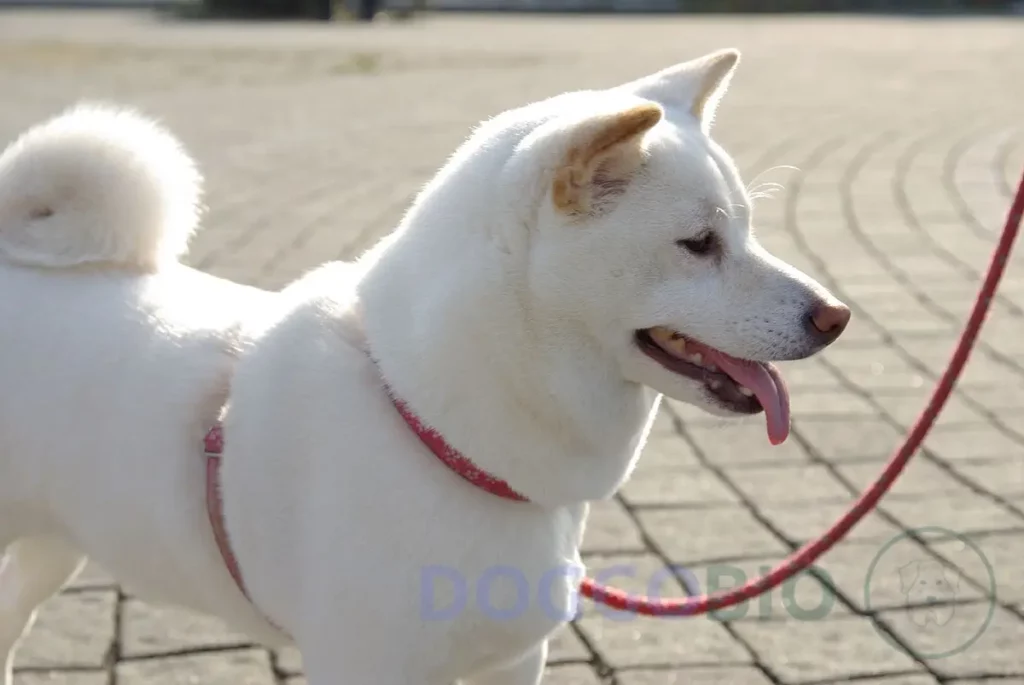
The Shiba Inu is a Japanese hunting dog that comes in different colors, including the White Shiba Inu. In this article, we’ll talk about any Shiba Inu that looks primarily white or light, including the Cream Shiba Inu and the albino, piebald, and pinto Shiba Inus.
One defining characteristic of the Shiba Inu is the Urajiro markings – the unique white spots on the sides of the mouth and cheeks. It can also be found on the underside of the jaw, chest, neck, and stomach. However, these markings may not be as visible with the White Shiba Inu.
What is Cream Shiba Inu?
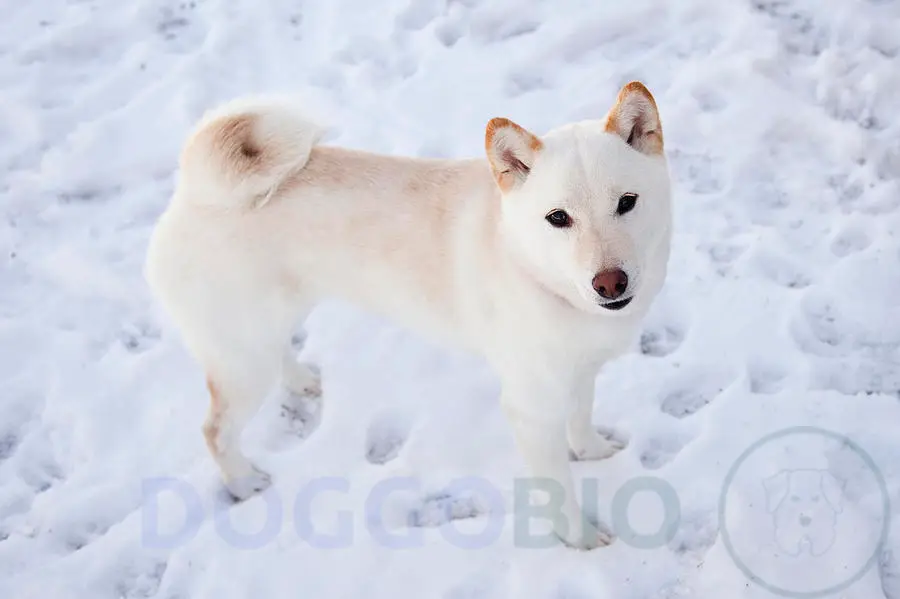
The coat of a cream Shiba Inu is relatively light and contains reddish and grayish tinges. Due to this, the unique Urajiro markings, usually visible on other Shiba Inu coats, can be indistinct on Cream Shiba Inu, making them seem whiter.
The term “Urajiro” refers to the characteristic white markings on Shiba Inus’s undersurface, including their belly, chest, inner ears, face, and legs. It’s an essential trait that identifies the Shiba Inu breed, and despite being less visible , they still possess these markings.
The Controversy Surrounding Cream Shiba Inu
The issue of Cream Shiba Inus has sparked a great deal of controversy among breed enthusiasts. On the one hand, some are adamant that cream-coated Shiba Inus should be able to compete in dog shows without fault, while others, particularly those from Japan, strongly believe that this gene should be bred out of the Shiba Inu gene pool.
The crux of the issue lies in the Urajiro markings, a crucial aspect of the Shiba Inu breed standard, which is less visible on cream-coated dogs than on darker coats.
The question of why someone would want a dog that doesn’t meet their native country’s standards is valid, but it’s a contentious issue that will require more research and thoughtful analysis to resolve.
Origins and History of Cream Shiba Inu
Like its fellow Shiba Inu counterparts – red, black, tan, and sesame – they were born from selective breeding in the early 20th century.
During this time, native Japanese dog breeds were in grave danger of extinction. War, disease, and the emergence of Western dog breeds in Japan had nearly obliterated these beloved breeds.
However, three tenacious Japanese Shiba dogs were carefully bred together, resulting in the Shiba Inu generation we know and love today.
While the preferred coat colors of the Shiba Inu are red, black and tan, and sesame, Cream remains a recognized color variation within the breed – albeit not a preferred one, given the breed’s rigorous standards.
Is White Shiba Inu the same as Cream Shiba Inu?
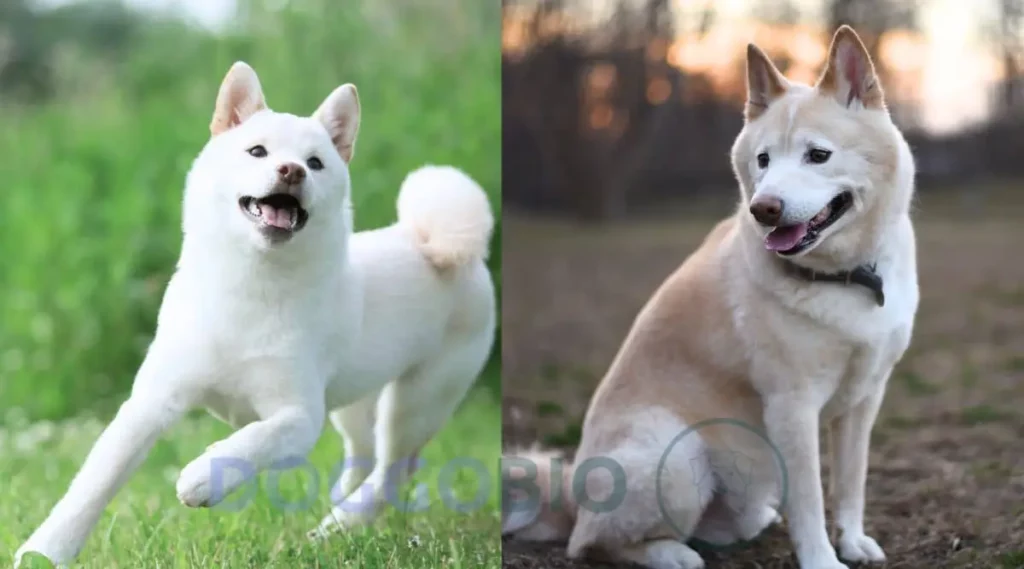
No, White Shiba Inu and Cream Shiba Inu are not the same. While the terms are often used interchangeably, there are distinct differences between the two.
Cream Shiba Inus have a white coat with a slight red or gray tint, whereas White Shiba Inus possess a pure white coat. White Shiba Inus can be albino, pinto, or piebald, which is not the case with Cream Shiba Inus.
It’s crucial to recognize these differences, especially when purchasing or entering a Shiba Inu into competitions, to ensure the dog meets the appropriate breed standard for its coat color.
Types of colors of Shiba Inu
The Shiba Inu breed has four official colors recognized worldwide. These colors are Red, Black and tan, Sesame, and Cream. These colors are strictly followed, and the Shiba Inu societies do not allow a deviation.
- Red is the most common and preferred color among the four. The Urajiro markings, which are white, are not very visible around the edges because the gene that is responsible for the red color lightens towards the belly.
- Black and tan Shiba Inus are tri-colored with predominantly black markings on the body and tan points in the eyebrows, ears, and legs. The Urajiro white markings are easily distinguished around the cheeks, chest, and belly.
- Sesame Shiba Inus have a red base coat with a black tip overlay. The black should be evenly blended without heavy concentration or patches on any body part.
- The Cream Shiba Inu is the least desirable among the four standard colors due to the barely discernible Urajiro markings, which are very important in judging the Shiba Inu’s standard.
Does the AKC recognize White Shiba Inu or Cream Shiba Inu?
No, the AKC does not fully recognize the Cream Shiba Inu without reservations. While the AKC does accept the Cream Shiba Inu, this color is viewed as a serious fault during competitions.
As for the all-white Shiba Inu, the AKC does not recognize this coat color variation, preventing these dogs from participating in AKC events.
Interesting facts about White Shiba Inus
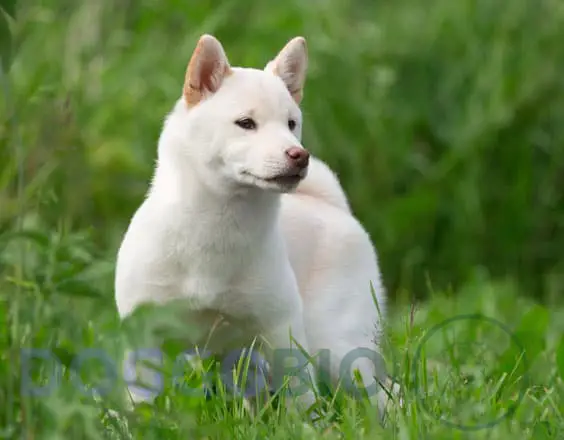
1. Any Shiba Inu with a light coat color is considered a White
Any Shiba Inu with a light coat color but lacks the distinctive Urajiro markings is considered White.
2. White Shiba Inus differ from Cream Shiba Inus
It’s essential to note that true White Shiba Inus differ from Cream Shiba Inus in various characteristics.
3. They have many different types
They also includes other varieties like the albino, piebald, and pinto.
4. An ancient breed
These beautiful dogs belong to an ancient breed originating from Japan, and they’ve captured the hearts of many dog enthusiasts worldwide.
5. Rare
It’s worth mentioning that they are pretty rare, which makes them even more fascinating and unique.
Interesting facts about the Cream Shiba Inu
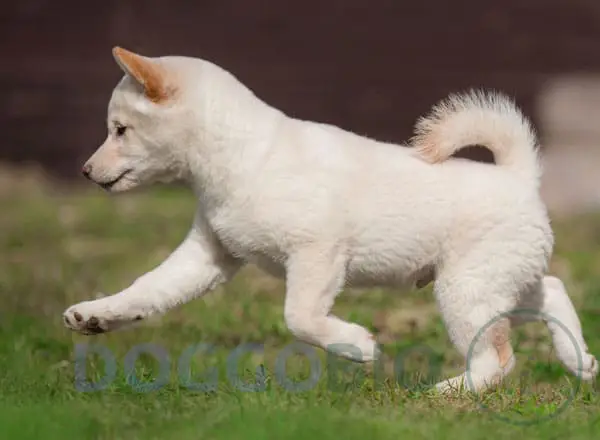
1. White Shiba Inus differ from Cream Shiba Inus
Did some call the Cream-colored Shiba Inu the “White Shiba Inu”? It’s true! Despite the name, they’re not the same as the real White Shiba Inus, which have distinctive markings.
2. Controversy
The Cream Shiba Inu is quite controversial among breed enthusiasts, with some even wanting to remove the color from the gene pool altogether. That’s because the Urajiro markings, significant for judging the breed standard, are barely visible.
3. A fault
The Cream-colored Shiba Inu is a significant fault in many dog show conformations, making it less desirable than other colors such as Red, Black, Tan, and Sesame.
4. Crossbreeding with the Kishu breed
Some speculate that they may have come about due to crossbreeding with the Kishu breed, which is predominantly white.
What Does a White Shiba Inu Look Like?
The White Shiba Inu boasts a fox-like appearance similar to other Shiba Inu. The eyes, slanted upwards towards the ears, have a distinctive triangular shape. The pointed and triangular ears complement the shape of the eyes. Their proportional skull and tapered muzzle add to their overall striking appearance. The thick tail, which bends or curls towards the back, completes the look.
Size, height, and weight
The size, height, and weight of a White Shiba Inu can vary depending on various factors such as gender and genetics.
On average, a full-grown White male Shiba Inu weighs around 23 pounds and stands about 16 inches tall at the shoulder. Females, on the other hand, typically weigh about 17 pounds and are about 14 inches tall.
During the first month puppies tend to have a growth spurt that affects their weight and height. By the third month, a male White Shiba Inu puppy can weigh around 7 pounds, while a female can weigh about 6 pounds.
By the seventh month, a male White Shiba Inu puppy can weigh around 16 pounds, while a female can weigh approximately 14 pounds.
It is essential to note that these are estimates and may vary from dog to dog.
They should have a compact, well-balanced appearance and a sturdy and athletic build at total growth.
| Age | Weight (Males) | Weight (Females) | Height (Males) | Height (Females) |
| 3 months | 7 – 16 pounds | 6 – 14 pounds | 10 – 12 inches | 9 – 11 inches |
| 6 months | 16 – 22 pounds | 14 – 17 pounds | 12 – 14 inches | 11 – 12 inches |
| 9 months | 22 – 23 pounds | 17 – 18 pounds | 14 – 16 inches | 12 – 14 inches |
| 12 months | 23 – 25 pounds | 18 – 20 pounds | 16 – 17 inches | 14 – 16 inches |
Coat colors and types
White Shiba Inu is not just a monochrome color. Some of them may have spots, patches, or even freckles. They can be further classified into several types, including albino and piebald.
Albino Shiba Inu has a pure white coat without any pigmentation on their skin and hair. On the other hand, piebald Shiba Inu has white spots of varying degrees on a light-colored coat. These spots can be small or large and may even cover the entire body in extreme cases.
What Does a Cream Shiba Inu Look Like?
The striking Shiba Cream is a canine with a physical appearance that is virtually indistinguishable from other Shiba Inus, except for their coat color. Yes, it’s true! The Shiba Cream’s distinguishing characteristic is its luscious coat color, which comes in a light color with hints of red and gray. The unique hue of their fur makes it challenging to notice their Urajiro markings, which are essential for judging the breed’s standards.
Moving on to their size, this breed is considered medium-sized dogs, making them ideal for families with children looking for smaller pets. However, here’s a curious fact: the size of a Shiba Inu determines how long it takes for them to mature fully. Smaller ones reach full maturity at one year, while larger ones continue growing until 14 months. When fully grown, an adult Shiba Inu should look well-proportioned and compact, reflecting their overall athleticism and agility.
For those wondering about their weight and height, male Cream Shibas stand up to 16.5 inches tall and weigh around 23 pounds, while females are smaller, standing approximately 13.5 inches tall and weighing 17 pounds.
Temperament and Personality
White and Cream colored Shiba Inus share the same characteristics as other Shiba Inus. They are known for their high prey drive due to their innate hunting instincts, making them energetic and aggressive toward other animals. They can be loyal to their family but are also known to be stubborn, independent, and confident.
Is Cream and White Shiba Inu a good fit for families?
Shiba Inus can be a great family pet. Still, it’s important to note that they have an independent personality that can be somewhat impatient, making them easily provoked when playing with children. As such, adult supervision is crucial to ensure the safety of both the dog and the children.
Shiba Inus can also be dominant towards other dogs who have a similar bossy attitude and may jump on them, so it’s essential to socialize them properly from a young age. However, Cream and White Shiba Inus tend to get along well with tamer breeds like Golden Retrievers, Labradors, and Chihuahuas, making them suitable for multi-dog households.
Is White Shiba Inu affectionate?
No, White Shiba Inus are not typically known for being overly affectionate. While they can be loving and loyal, they are not usually cuddly or clingy. Shiba Inus have an independent nature and might prefer to keep some distance from their human companions.
However, they can still show affection in their unique ways. If you’re seeking a dog that’s constantly by your side, a Shiba Inu might not be the ideal choice.
Do Shiba Inus Cream?
Yes, Shiba Inus do scream. The Shiba Inu’s distinctive high-pitched scream can perplex many dog owners. However, this is a typical Shiba Inu behavior attributed to their primitive hunting instincts. This trait is believed to be more prevalent in Shiba Inus than in other dog breeds.
Shiba Inus scream to convey various emotions, including excitement, fear, anxiety, and frustration. They might also scream when they are in pain or feel threatened. The scream can be so intense and sharp that it can be heard from a significant distance.
As a result, it’s crucial to comprehend this behavior and train your Shiba Inu appropriately.
Training
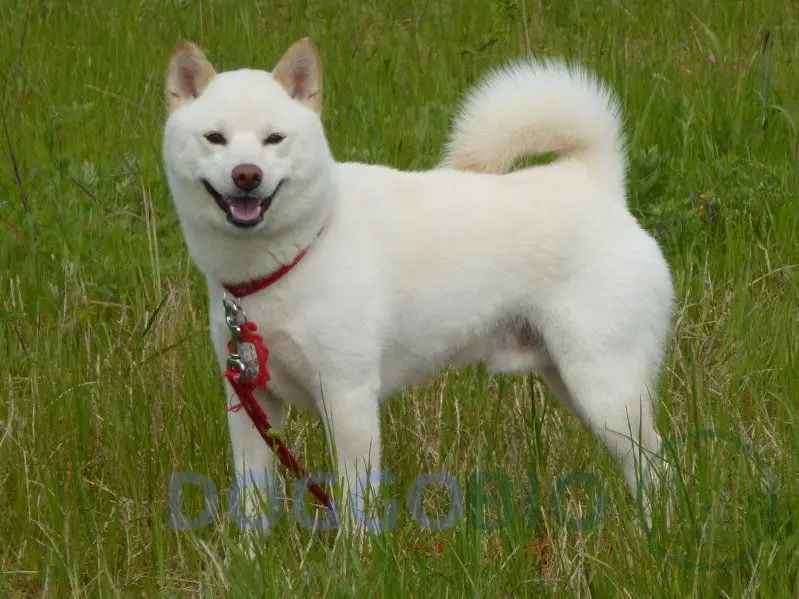
It would help to prepare for a tough challenge when training a White Shiba Inu. These dogs are well-known for their stubbornness and may not always obey your commands. That’s why it’s critical to train your pup early on while they are still puppies.
Obedience training and basic commands are essential, as they can help your dog learn to follow your lead and avoid potential problems in the future.
Exercise Requirements
White and Cream Shiba Inu require considerable physical activity to keep them fit and healthy. At least 30 minutes to an hour of daily exercise is recommended, which can be split into two sessions. It would help if you combined physical activities with mental stimulation to keep your Shiba Inu engaged and active.
If they don’t exercise enough, they may become bored and anxious, leading to destructive behavior such as chewing on furniture. Therefore, ensure you provide them with the necessary exercise to avoid such scenarios.
Living Conditions
The adaptable and independent Shiba Inus can reside in any living condition, from small apartments to spacious homes. Nevertheless, proper training and socialization are crucial to ensure that they adapt to the environment and the people around them.
These furry creatures can be left alone for up to 8 hours, provided they are adequately exercised to avoid boredom and anxiety.
Grooming and Cleaning
There’s more to grooming cream and white Shiba Inu than just a quick brush and bath.
- These dogs shed like crazy, especially in the spring and fall when they blow their coat. To prevent hair from taking over your home, brush your pup more often than once a week using a slicker brush or a Furminator.
- When it comes to bathing, make sure you use a shampoo specifically designed for dogs, not human shampoo, which can irritate their skin. And remember to trim those long nails and clean those floppy ears to keep them healthy and infections-free.
- But wait, there’s more! To maintain good oral hygiene, brush your pup’s teeth at least twice or thrice a week using dog-specific toothpaste. Neglecting this can lead to dental problems, which can be costly.
So, if you want your Cream and white Shiba Inu to look and feel their best, you’ll need to put in some effort. But it’s worth it when you see them wagging their tail with joy and affection!
| Grooming Needs | Grooming Frequency |
| Hair Brushing | Daily brushing |
| Bathing | Once a week |
| Nail Trimming | As needed |
| Teeth Brushing | Three to four times a week |
Are Cream and White Shiba Inu Hypoallergenic?
No, White and Cream Shiba Inus are not hypoallergenic. They shed their thick double coat throughout the year, and this shedding intensifies during spring and fall. If you’re allergic or prefer a dog that doesn’t shed as much, these variations of Shiba Inus might not be the ideal choice for you.
Food and Diet
When your Cream or White Shiba Inu is just a little pup, they need a diet of around 15% to 18% fats and 30% protein. They need about 1/3 cup of food three times a day at eight weeks old.
But as they grow up, you must gradually increase the amount and decrease the feeding times to twice daily. When fully grown, they need about 1 to 1.5 cups of food daily to keep them going strong.
Common Health Issues
If you think Cream or White Shiba Inus are immune to health problems because of their coat color, you’re barking up the wrong tree!
Even though the recessive gene that produces their distinctive fur has nothing to do with their overall health, these breeds are not immune to inherited health issues.
1. Eyes issue
Cataracts, a hazy film that covers the eye lens, is a common eye issue that typically affects older White and Cream Shiba Inus.
This eye problem is passed down genetically and can be diagnosed at an advanced age. Shiba Inus, in general, are prone to developing cataracts, so it is essential to be aware of this and monitor your furry friend’s eye health regularly.
2. Dental problem
Even our furry friends, such as White Shiba Inus and Cream Shiba Inus, are susceptible to this common canine problem.
Specifically, gum infections are something to watch out for with these breeds. Don’t let it slide, folks! Because if left untreated, a superficial gum infection can spiral into a significant health issue affecting your pet’s vital organs like the heart and kidneys. Keep those doggy teeth clean!
3. Pyometra
Female White Shiba Inus and Cream Shiba Inus can be prone to pyometra, a severe uterus infection. This health condition usually occurs after their heat cycle, when hormones fluctuate and stimulate the growth of cells in the uterus. If the female dog is not pregnant, the uterus becomes susceptible to bacterial growth, which can lead to pyometra.
If left untreated, pyometra can be fatal. It is essential to monitor your female Shiba Inu closely during and after her heat cycle and to seek veterinary care immediately if you notice any signs of illness or discomfort.
4. Thyroid Problems
Thyroid problems in Shiba Inu usually manifest as hypothyroidism, a hormonal disorder resulting from the thyroid gland’s inability to produce the proper levels of thyroid hormones.
Hair loss is one of the most common signs of hypothyroidism in Shiba Inus. Moreover, Shiba Inus with hypothyroidism may also exhibit signs of aggression. Therefore, it is essential to monitor your furry friend’s behavior and health and seek veterinary care if you notice any changes.
5. Hip Dysplasia
Hip dysplasia is a skeletal condition that can cause discomfort and pain for your furry friend, be it a White or Cream Shiba Inu. The situation occurs when the ball and socket of the hip joint do not develop uniformly.
This can cause uneven wear on the joint, leading to inflammation and discomfort. You may notice signs of lameness and decreased muscle mass in the thigh area. You must seek veterinary care if you suspect your dog suffers from hip dysplasia.
6. Vogt-Koyanagi-Harada Syndrome (VKH Syndrome)
Vogt-Koyanagi-Harada Syndrome (VKH Syndrome) is an autoimmune disorder commonly affecting Shiba Inus, including Cream and White Shiba Inus.
This condition occurs when the overactive immune system attacks melanocyte cells responsible for eye and skin pigmentation. Symptoms of VKH Syndrome include eye inflammation and whitening of the skin, nose, lips, coat, nails, and footpads. I
f you suspect your furry friend has VKH Syndrome, it’s essential to consult with a veterinarian as soon as possible to prevent the condition from worsening.
How Long Does a Cream and White Shiba Inu Live?
The lifespan of the White Shiba Inu and Cream Shiba Inu breeds is impressively long compared to other dogs, ranging from 12 to 16 years on average.
This lifespan can vary based on various factors, including diet, exercise routine, and overall health. Factors like genetics and environmental factors can also impact their lifespan.
Care for these furry friends must be cared for by providing them with regular check-ups with a veterinarian, proper exercise, and a nutritious diet to ensure they live long and happy lives.
How Much is The Price of Cream Shiba Inu?
The price tag for a Cream Shiba Inu puppy could range from $1,000 to $2,400, depending on various factors such as the breeder’s reputation and the pup’s quality.
The price may increase if the pup has an excellent lineage or comes from a champion line.
How Much is The Price of White Shiba Inu?
On average, a White Shiba Inu can cost around $1,900. However, the cost can vary depending on the breeder’s location and reputation for producing high-quality pups, leading to confusion.
It is worth noting that finding a White Shiba Inu puppy may not be easy, leading to a higher price tag. Despite this, compared to other dog breeds, the cost of them not as steep, causing a burst of relief for prospective pet owners.
Are Cream and White Shiba Inu Right For Me?
- Are you a person who loves to move around?
- Do you possess vast experience in handling and nurturing dogs?
- Are you willing to allocate sufficient time and effort to training a dog?
- Do you know how to curb the tenacious habits of a dog?
If your response to these inquiries is a resounding ‘yes,’ then a White Shiba Inu or a Cream Shiba Inu may be your appropriate four-legged friend.
List of dogs that are similar to White Shiba Inu
Frequently Asked Questions
1. How many colors of Shiba Inu?
The glorious Shiba Inu has four (4) official colors to boast. You can witness the stunning beauty of these canine companions in shades of red, sesame, black and tan, and Cream.
2. What is the rarest color of Shiba Inu?
Sesame, a distinctive and unusual coat color pattern for a Shiba Inu, is considered the rarest. It is characterized by a mixture of black and white or red and white hairs intermingled in a “salt and pepper” fashion, creating a beautiful and unique appearance.
While sesame Shiba Inus are uncommon, they are highly sought after by dog enthusiasts for their distinctive look.
3. Is White Shiba Inu different from other Shiba Inu?
No, White Shiba Inus are not different from other Shiba Inus in terms of physical traits and temperament. The only distinction is their coat color.
4. Is White Shiba Inu suitable for first-time dog owners?
No, White Shiba Inus may not be the best choice for first-time dog owners. Regardless of their coat color, Shiba Inus are known for their dominant personalities and require an owner with patience and a firm hand. These spirited dogs demand confidence and consistency from their human companions.
Whether it’s a white, cream, or any other colored Shiba Inu, the responsibility and challenges of caring for them remain consistent. For those considering adopting a Shiba Inu as their first dog, it’s essential to be prepared for a demanding but ultimately rewarding journey. With the right approach and dedication, anyone can become a successful Shiba Inu owner.
5. Is White Shiba Inu’s health less than usual?
No, White Shiba Inus are not less healthy than other Shiba Inus. The belief that cream Shiba Inus are less healthy due to their coat color is a misconception. The recessive gene responsible for the cream coat does not negatively impact the dog’s overall health. It’s essential to differentiate cream Shiba Inus from albino dogs.
Albinism is a genetic disorder affecting melanin production, leading to a completely white coat and pink eyes. Cream Shiba Inus have their coat color variation due to two recessive “e” genes, and this does not indicate any health issues.
6. What climate is suitable for Cream Shiba Inu?
Cream Shiba Inus are real weather chameleons! They are capable of thriving in both cold and warm environments. These puppies have a thick double coat that provides insulation, keeping them warm in chilly weather.
On the other hand, their fur also has cooling properties that enable them to stay cool in warmer temperatures. Therefore, they can handle various weather conditions, making them adaptable to different climates.
7. Are Cream Shiba Inu rare?
Yes, Cream Shiba Inus are rare within the Shiba Inu breed. Their light-colored coat is not a common occurrence among the breed’s four recognized colors.
The controversy regarding Cream Shiba Inus and breeding standards has also influenced some breeders to avoid breeding this color, adding to its rarity.
8. How long do Shiba Inus live?
Shiba Inus have a relatively long lifespan compared to many other dog breeds. On average, they can live between 12 to 15 years. However, with proper care, a healthy Shiba Inu may even live beyond 15 years.
9. Do Shiba Inus shed a lot?
Yes, Shiba Inus do shed a lot. They possess a dense double coat that sheds heavily, especially during the shedding seasons that happen twice a year.
Regular brushing and grooming are essential to manage their shedding and maintain their coat’s health.
10. Are Shiba Inus good with children?
No, Shiba Inus may not always be the best match for young children due to their strong independent nature. They tend to be more compatible with older children who can interact with them appropriately and respect their boundaries.
However, with early socialization and training, a Shiba Inu can have a positive and safe relationship with children.
Conclusion
In conclusion, the White Shiba Inu is a fascinating and captivating breed gaining popularity worldwide. With their striking appearance, playful personalities, and loyal nature, it’s easy to see why they have become a sought-after companion for many.
While they may be rare and require more care than other breeds, their love and companionship are worth the effort. Whether you’re a seasoned dog owner or new to the world of pets, the White Shiba Inu is a beautiful addition to any household willing to provide them with the care and attention they deserve.

Pingback: Lab Shiba Mix: Exploring the Best of Both Worlds 2023
Pingback: Shiba Inu Poodle Mix: Interesting Facts You Need to Know 2024